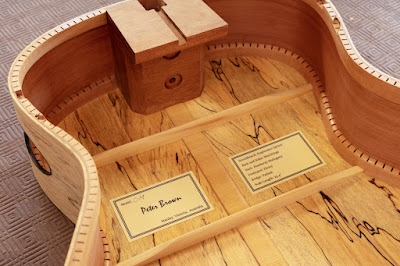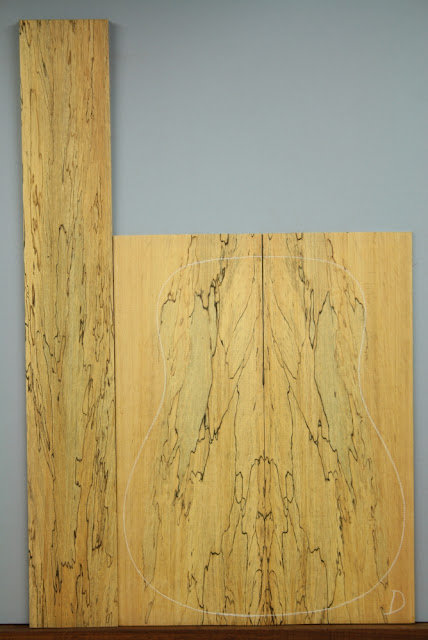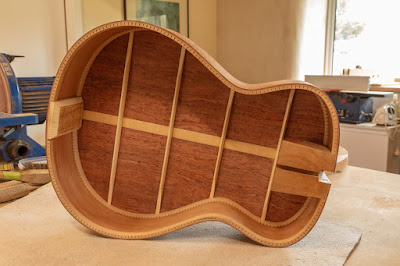I had the use of an unoccupied shop here in town for a few months in 2016 and was able to work on some instruments there until the owner asked that I vacate so he could begin renovations. I had recently sprayed lacquer on three guitar bodies and their necks at the time, and they hung inside a cupboard with a computer fan porting the fumes to the exterior of the building for a few weeks while I got on with other things. When it finally came time to pack up and move out, I placed the guitar bodies and necks in some cheap new cases, comfortable in the knowledge that they’d be protected throughout the move and beyond.
From that point on, construction of my workshop became a priority that occupied me for more than three years. When the dust had settled and I was ready to complete those guitars, I found that dye from the lining of the guitar cases had penetrated the lacquer on the soundboards to an unknown degree, although I figured it was likely that the staining extended to a significant depth. I pondered how best to remedy the situation for some time, often practicing avoidance behaviour for months at a time as I moved ahead with new instruments.
The alternative was to use a chemical stripper over the entire body which would essentially take me back to square one in the finishing process. The degree to which I’d be successful in neutralising the stripper before I applied new sealer and top coats gave me cause for concern though.
After weighing up the advice kindly offered by a couple of Facebook friends, I decided to strip the finish from the bodies entirely. While acetone softened the finish to the extent that it was at least sticky and could be removed with difficulty using steel wool or a single edged razor, it was a painfully slow process, and I concluded that removing all of the lacquer in this way was far too onerous a task. I opted for regular paint stripper which proved very effective in softening the lacquer, allowing it to be easily scraped off. I was careful to remove all traces of the stripper using generous quantities of denatured alcohol, and I'm ready - once again - to pore fill in readiness for spraying.
As I began work on these guitars up to twelve years ago, you'll no doubt appreciate how keen I am to complete them and resume work on other instruments I've commenced more recently.
Cheers
Pete



















